 Menopause is a normal phase of a woman's life so when problems arise it is often because of imbalances that have developed through changing hormonal levels. Menopause is a rite of passage through the next stage of your life. Aviva Room describes menopause:
Menopause is a normal phase of a woman's life so when problems arise it is often because of imbalances that have developed through changing hormonal levels. Menopause is a rite of passage through the next stage of your life. Aviva Room describes menopause:
'Venturing through the gateway to enter an ancient temple, in order to claim that joy a woman must be willing to pass beyond the monsters who guard its gate…as thousands of women from all cultures throughout history have whispered to each other, it is the most exciting passage a woman ever makes.'- Aviva Romm - Botanical Medicine for Women's health.
Menopause is influenced by a change in hormone levels such as oestrogen, which is mainly produced by the ovaries, though small amounts are also made by the adrenal glands and by the placenta of a pregnant woman.
However, the body does not stop producing oestrogen overnight and the process can take several years, during which symptoms arise gradually. This gradual change is called ‘peri-menopause’.

Menopause (peri- or post-menopausal) often involves evaluating one’s life.
For some, this is a smooth transition, for others the physical and psychological symptoms can be more pronounced.
These can manifest with a feeling of vulnerability and anxiousness not to mention a lack of sleep, hot flushes, skin and vaginal dryness, difficulty of concentrating or memory problems and reduced libido.
Lessening levels of oestrogen can predispose your body to conditions, such as cardiovascular problems and osteoporosis – (oestrogen plays a part in calcium reabsorption of the mineral components of bone and in collagen metabolism).
 Increased irritability, sleep deprivation and stress levels can affect adrenal hormone production.
Increased irritability, sleep deprivation and stress levels can affect adrenal hormone production.
Low adrenal function is one of the important underlying causes of menopausal symptoms.
Throughout our lives, the adrenal glands are also responsible for the production of cortisol, aldosterone and adrenaline, among other hormones.
Western Herbal Medicine's (WMH) approach is useful in reframing menopause –
let’s call it a wise woman’s perspective.Balancing the body with botanicals supports and restores the health and equilibrium of life during menopause.
Throughout this, sometimes difficult period, women-centered care is based on nourishing the whole person, empowering you for the change, whilst the hormonal and nervous system go through profound changes and allows you to define a new sense of self.
You might have used over-the-counter remedies such as Black Cohosh, Evening Primrose or Red Clover amongst other herbal remedies, which have offered some assistance. The levels of the herbal extracts in the over-the-counter supplements might not be effective enough, or your symptoms are not helped by the combination of the herbs you have purchased.

In supporting you through this time of transformation,
a Herbal Medicine therapist will help you to define what is important to your care.
It often is to reduce your individual menopausal symptoms, and focus on your overall health, whilst supporting you during the biological changes your body is going through.
Lifestyle factors:
 Having a healthy diet: Aim at lowering sugar, saturated fat and salt intake.
Having a healthy diet: Aim at lowering sugar, saturated fat and salt intake.
Maintaining bone strength: A diet rich in calcium and vitamin D helps to strengthen bones. Together, magnesium and calcium are crucial to bone health and other important bodily functions; however, the way your body uses them means the minerals must work in tandem to be fully effective. Calcium is involved in muscle contraction, while magnesium lets them relax. Importantly as well as Vitamin D—certain enzymes in your body require magnesium to be able to convert vitamin D into its active form known as calcitriol as well as vitamin K (K1 and K2)—these promote the calcification of bones and prevent blood vessels and kidneys from calcifying.
Be active: A feeling of increased stress and anxiety during menopause is normal. Regular exercise helps to convert stress into positive energy, whilst also guarding against heart disease. Regular, varied weight-bearing exercise can give the best results; you could try walking, cycling, swimming, running, aerobics or yoga.
helps to convert stress into positive energy, whilst also guarding against heart disease. Regular, varied weight-bearing exercise can give the best results; you could try walking, cycling, swimming, running, aerobics or yoga.
Aim to reduce or stop smoking: Smoking has been shown to lead to earlier menopause and trigger hot flashes. If you smoke, you also run a higher risk of developing osteoporosis. Research also suggests that smoking impedes the hormone calcitonin, which helps build bones – and therefore inhibits the reabsorption of calcium to the bones.
Food information:
Get enough calcium: Eat and drink two to four servings of dairy products and calcium-rich foods a day. Calcium is found in dairy products, fish with bones (such as sardines and canned salmon), broccoli, and legumes.
Pump up your iron: Eat at least three servings of iron-rich foods a day. Iron is found in lean red meat, poultry, fish, eggs, leafy green vegetables, nuts, and enriched grain products. The recommended dietary allowance for iron in older women is 8 milligrams a day.
Get enough fiber: Help yourself to foods high in fiber, such as whole-grain bread, cereals, pasta, rice, fresh fruits, and vegetables. Most adult women should get about 21 grams of fiber a day.
Eat fruits and vegetables: Have at least 1 1/2 cups of fruit and 2 cups of vegetables each day.
Avoid hot flashes: Try cutting down the foods that trigger your symptoms. Regulating the intake of coffee, alcohol and spicy foods, especially late at night can bring relief. As a good alternative, you could use herbal teas, decaffeinated drinks and water.
To have more energy: Try to avoid snacking and sugar-loaded foods that can cause a sharp rise in glucose levels (this triggers the release of insulin) as these can leave you feeling tired.
 Keep skin hydrated: Drink plenty of water. The nutrients and oils in nuts, seeds and legumes contain oils, vitamin E, zinc and calcium, magnesium. The nutrients (vitamins and minerals) and oils in the diet may help to prevent dry skin.
Keep skin hydrated: Drink plenty of water. The nutrients and oils in nuts, seeds and legumes contain oils, vitamin E, zinc and calcium, magnesium. The nutrients (vitamins and minerals) and oils in the diet may help to prevent dry skin.
Decrease irritability and bad moods: Ensure you eat enough high-protein foods, which contain the amino acid tryptophan - for example turkey, oats and legumes. Tryptophan helps the manufacturing process of the neurotransmitter serotonin among other things. Serotonin can help regulate moods and may help control sleep and appetite.
Promote a healthy brain: Yogurt contains healthy bacteria, Lactobacillus and Bifidobacteria. There is emerging evidence that these bacteria and fermented products have positive effects on brain health. Pumpkin seeds and bananas are excellent sources of potassium and zinc, which helps regulate electrolyte balance and manage blood pressure and may help to reduce symptoms of stress and anxiety. One study carried out on 100 female students found that zinc deficiency may negatively affect them. Zinc is essential for brain and nerve development. The largest storage sites of zinc in the body are in the brain regions involved with emotions.
'No two women are the same.
The individualised, therapeutic herbal treatment plan has brought welcome relief to my clients.'
Book a 15-minute free telephone conversation to discover
how The Green Herbalist Clinic can help you.
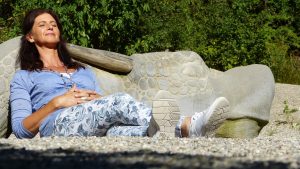


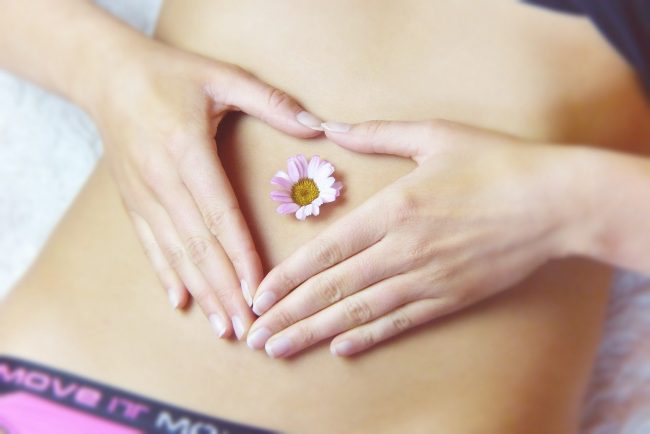

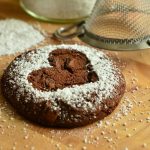
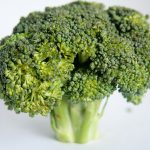 Unlike a refined biscuit, which offers some nutritional value, broccoli lives up to its superfood reputation. This crunchy cruciferous vegetable's route down to the digestive tract, not only feeds your gut bacteria, but also supports immune function, has a good amount of fibre, and micronutrients and bestows various health benefits along the way. it’s no contest, really.
Unlike a refined biscuit, which offers some nutritional value, broccoli lives up to its superfood reputation. This crunchy cruciferous vegetable's route down to the digestive tract, not only feeds your gut bacteria, but also supports immune function, has a good amount of fibre, and micronutrients and bestows various health benefits along the way. it’s no contest, really.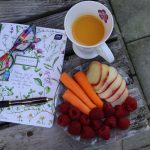
 Keep frozen fruit and veggies in the house at all times. Perfect for smoothies, snacks, or bulking-out meals.
Keep frozen fruit and veggies in the house at all times. Perfect for smoothies, snacks, or bulking-out meals.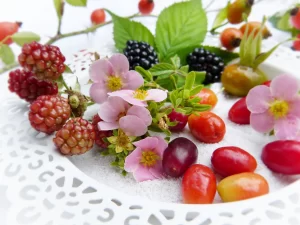 Microbiome diversity
Microbiome diversity
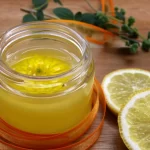 Add lemon, orange slices, mint or cucumber for flavour Buy a 600ml reusable water bottle: have one finished by lunchtime and another by the end of work, then top yourself up by dinner.
Add lemon, orange slices, mint or cucumber for flavour Buy a 600ml reusable water bottle: have one finished by lunchtime and another by the end of work, then top yourself up by dinner.

 Rosehips contain a good amount of vitamin C and other vitamins and minerals for the dark winter months when you feel depleted from energy. Rosehips are high on galactolipids, which can provide anti-inflammatory and anti-oxidant action - beneficial in conditions such as osteoarthritis, rheumatoid arthritis and IBD.
Rosehips contain a good amount of vitamin C and other vitamins and minerals for the dark winter months when you feel depleted from energy. Rosehips are high on galactolipids, which can provide anti-inflammatory and anti-oxidant action - beneficial in conditions such as osteoarthritis, rheumatoid arthritis and IBD. Rosehip syrup recipe
Rosehip syrup recipe
 Cholesterol is a waxy substance found in your blood. Your body needs cholesterol to build healthy cells, and hormones, however high levels of cholesterol can increase your risk of heart disease. With high cholesterol, you can develop fatty deposits in your blood vessels. Eventually, these deposits grow, making it difficult for enough blood to flow through your arteries. Sometimes, those deposits can break suddenly and form a clot that causes a heart attack or stroke. A healthy diet, regular exercise and sometimes medication can help reduce high cholesterol.
Cholesterol is a waxy substance found in your blood. Your body needs cholesterol to build healthy cells, and hormones, however high levels of cholesterol can increase your risk of heart disease. With high cholesterol, you can develop fatty deposits in your blood vessels. Eventually, these deposits grow, making it difficult for enough blood to flow through your arteries. Sometimes, those deposits can break suddenly and form a clot that causes a heart attack or stroke. A healthy diet, regular exercise and sometimes medication can help reduce high cholesterol. Berries, such as blackberries, blackcurrants, raspberries, bilberries or blueberries, cranberries, lingonberries, and strawberries have been shown to decrease LDL oxidation (and therefore reduce LDL build-up) and increase HDL-cholesterol following the dietary intervention
Berries, such as blackberries, blackcurrants, raspberries, bilberries or blueberries, cranberries, lingonberries, and strawberries have been shown to decrease LDL oxidation (and therefore reduce LDL build-up) and increase HDL-cholesterol following the dietary intervention In addition, specific berries, such as bilberry and black currant extracts, cranberry extracts, and freeze-dried strawberries were shown to have favourable effects on plasma glucose or lipid profiles in people with risk factors including type 1 or type 2 diabetes mellitus, dyslipidemia or metabolic syndrome.
In addition, specific berries, such as bilberry and black currant extracts, cranberry extracts, and freeze-dried strawberries were shown to have favourable effects on plasma glucose or lipid profiles in people with risk factors including type 1 or type 2 diabetes mellitus, dyslipidemia or metabolic syndrome.
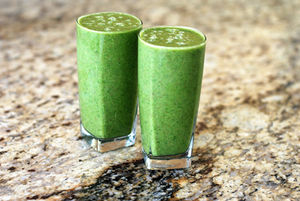
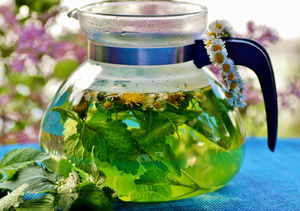


 When you’re away on holiday sometimes you can experience cuts, bruises, upset tummies,
When you’re away on holiday sometimes you can experience cuts, bruises, upset tummies,
 Mushrooms are often considered only for their culinary use because they are packed with flavour-enhancers and have gourmet appeal. In the past, food scientists like me often praised
Mushrooms are often considered only for their culinary use because they are packed with flavour-enhancers and have gourmet appeal. In the past, food scientists like me often praised  Six Mushrooms That Act as Turbo-Shots for Your Immune System
Six Mushrooms That Act as Turbo-Shots for Your Immune System